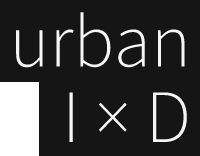Tobias Revell: My turn again. Like Martin, I'm worried about what we're missing here. We've all given a very upbeat and hopeful overview of Urban Interaction Design from our positions of privilege without addressing many of the problems. There are problems of barriers to access and levies. Regardless of the 'good will', criticality or consideration of a project, we have to be extremely wary of the fact that urban legal and infrastructural conditions marginalise and even punish large parts of a society. Efforts to 'improve' that part of the urban fabric - in whatever way - will, on the whole, force these levies higher by increasing property prices, demanding more security, instituting new legal frameworks.
What I mean is that, for example, dumping a load of lcd screens in a city as an intervention to help people connect and communicate comes with a load of security, legal, energy and access issues that are often hidden behind the rosy glow of said intervention.
Manu, for you I ask the question you asked me back with some additions. You've probably got a better idea of projects or initiatives that are effective than I do; I'd be particularly interested to hear any that begin to deal with the systematic failings of the city or the state to provide happiness. Additionally, I think it's easy to spot and filter out the spectacular, but how do we measure the success or transformative power of a project?
Han, I'm glad you mentioned seams. This is something that the pedlars of 'big data' (see also big tobacco, big ag, big pharma, big arms) are beginning to realise is inherent in their business model. Language here becomes particularly important in parallel, (see also the cloud > the [company name] cloud > your cloud > my cloud e.g. the massive, highly-securitised network of fibre optic cables and server centres that works bypass legal and tax regulation). You also begin to talk provocatively about mobile and 'invisible cities between borders.' I was wondering if you could expand on a definition for these and how you think they might have a timely relationship with this new and nascent field.
This post is part of the online conversation about urban interaction design: June 2014
